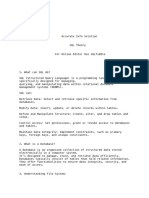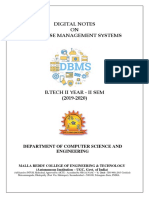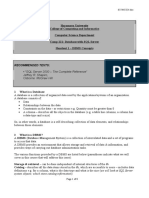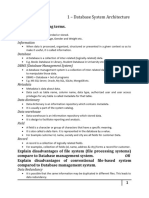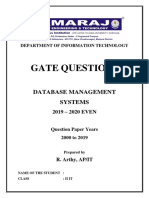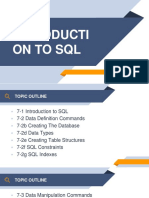0% found this document useful (0 votes)
48 views3 pagesRDBMS - In-Depth Class Notes
The document provides an in-depth overview of Relational Database Management Systems (RDBMS), covering key concepts such as database design, SQL, transactions, and data integrity. It discusses features like normalization, keys, concurrency control, and advanced topics including NoSQL and data warehousing. Practical experience with RDBMS tools like MySQL or PostgreSQL is encouraged for skill development.
Uploaded by
jiyoyac719Copyright
© © All Rights Reserved
We take content rights seriously. If you suspect this is your content, claim it here.
Available Formats
Download as PDF, TXT or read online on Scribd
0% found this document useful (0 votes)
48 views3 pagesRDBMS - In-Depth Class Notes
The document provides an in-depth overview of Relational Database Management Systems (RDBMS), covering key concepts such as database design, SQL, transactions, and data integrity. It discusses features like normalization, keys, concurrency control, and advanced topics including NoSQL and data warehousing. Practical experience with RDBMS tools like MySQL or PostgreSQL is encouraged for skill development.
Uploaded by
jiyoyac719Copyright
© © All Rights Reserved
We take content rights seriously. If you suspect this is your content, claim it here.
Available Formats
Download as PDF, TXT or read online on Scribd
/ 3









































